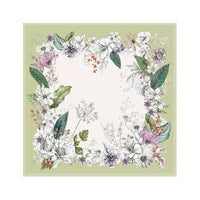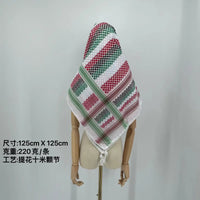What Does a Keffiyeh Symbolize?
The keffiyeh, a traditional Middle Eastern headdress, has transcended its practical origins to become a powerful symbol of cultural identity and political resistance. Known by various names such as kufiyyeh, shemagh, and hatta, this square-shaped cotton scarf is more than just a piece of clothing. It holds deep historical, cultural, and political significance, particularly in the Palestinian context. In this article, we will explore what a keffiyeh symbolizes and its journey from a practical accessory to a global emblem of solidarity and resistance.
The Origins of the Keffiyeh
The keffiyeh's roots can be traced back to ancient Mesopotamia around 3100 BC, where it was worn by Babylonians and Sumerians. The term "keffiyeh" itself originates from the city of Kufa in Iraq. Traditionally, it was an essential piece of clothing for Bedouins and fellahin (farmers) in the desert regions, providing protection from the harsh sun and sandstorms.
Symbol of Palestinian Nationalism
The keffiyeh gained significant political symbolism during the Arab Revolt in Palestine from 1936 to 1939. Initially worn by Palestinian farmers, it became a symbol of resistance when rebels used it to conceal their identities. The British authorities' attempts to ban the keffiyeh only strengthened its association with Palestinian nationalism. During this period, the urban population also adopted the keffiyeh, creating a sense of unity and solidarity among Palestinians.
Yasser Arafat and the Keffiyeh
The keffiyeh's prominence as a symbol of Palestinian identity was further solidified by Yasser Arafat, the leader of the Palestine Liberation Organization (PLO). Arafat was rarely seen without his black-and-white keffiyeh, which he wore in a distinctive style to represent the territory claimed by Palestine. His adoption of the keffiyeh brought international attention to its significance and made it a global symbol of Palestinian resistance.

Patterns and Their Meanings
The patterns on the keffiyeh are not merely decorative; they are imbued with symbolic meanings that reflect Palestinian culture and history. The most common patterns include:
- Fishnet: Represents the connection between Palestinian fishermen and the Mediterranean Sea.
- Bold Lines: Symbolize the trade routes that historically passed through Palestine, highlighting its role as a hub of cultural and economic exchange.
- Olive Leaves: Represent strength, resilience, and perseverance, as the olive tree is a vital symbol of Palestinian heritage and attachment to their land.

Cultural Appropriation and Commercialization
In recent years, the keffiyeh has been subject to cultural appropriation and commercialization. Fashion brands such as Topshop, ASOS, and Urban Outfitters have used the keffiyeh pattern in their designs, often without acknowledging its cultural and political significance. This has sparked debates about cultural appropriation and the importance of respecting the keffiyeh's heritage.
The Importance of Authenticity
To honor the keffiyeh's cultural significance, it is crucial to purchase authentic keffiyehs from Palestinian or Arab-owned businesses. One notable manufacturer is the Hirbawi Textile Factory in Hebron, which has been producing keffiyehs since the 1960s. Unlike mass-produced versions from China, Hirbawi's keffiyehs are made from 100% cotton and uphold the traditional craftsmanship.
The Keffiyeh in Fashion and Activism
Despite its commercialization, the keffiyeh remains a potent symbol of activism and solidarity. It is worn by people around the world to show support for Palestinian rights and other anti-imperialist causes. The keffiyeh's versatility allows it to be styled in various ways, from a headscarf to a neckerchief, making it a popular accessory in both fashion and political movements.
Notable Figures and the Keffiyeh
Prominent figures such as Leila Khaled, a member of the Popular Front for the Liberation of Palestine (PFLP), have also contributed to the keffiyeh's iconic status. Khaled's images wearing the keffiyeh during hijackings in the 1960s and 1970s became symbols of Palestinian resistance and women's participation in the struggle for liberation.
Conclusion
The keffiyeh is much more than a traditional headdress; it is a symbol of Palestinian identity, resistance, and solidarity. Its patterns reflect the rich cultural heritage of Palestine, while its adoption by political leaders and activists underscores its significance in the fight for freedom and justice. As the keffiyeh continues to be embraced by people worldwide, it is essential to respect its origins and support authentic sources that uphold its cultural and political legacy.





